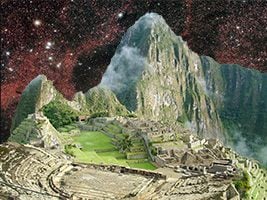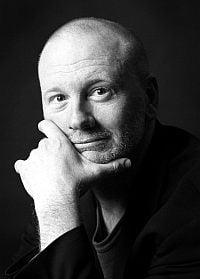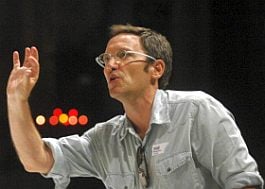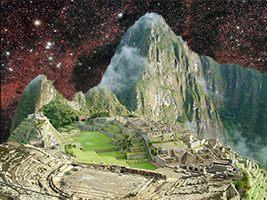
memorialized
Masterpiece #1, Amphitheatre, by Australian composer Brett Dean, began the program. Based on an episode in the unsettling book Momo by Michael Ende (author of The Neverending Story), Dean’s “dramatic scene for large orchestra” is designed to evoke, first, the essential stoniness of a Roman amphitheater under the sky and, later, ghosts of the ruin’s past glories and events of “ritualized violence” that took place there.
The stoniness of the initial music struck a chord in me, a former geologist. An amazing variety of bass timbres involving all low instruments, initially static but soon slowly pulsating, began the 15-minute work. Two minutes in, quiet steel drums added more rigidity to the music. Then, muted fanfares slowly emerged from the soundworld, building to a brief shrieking climax before dying down among murmuring flutes. Finally, in a stroke of genius, muted trumpets again sounded, but this time into the bells of tubas placed below them, adding a mystic metallicism to the spectral scene.
Boring Becomes Heroic
Masterpiece #2 completed the program after intermission. One of the most sought-after composers around these days is Osvaldo Golijov, whose Azul (Blue)
The four movements of the piece flow together seamlessly, despite highly contrasting passages between full orchestral tutti and the smaller ensemble at the front of the stage. And what an ensemble it was! Besides Weilerstein’s amplified cello, there was Michael Ward-Bergeman’s self-engineered, amplified “hyper-accordion,” and omnipercussionists Jamey Haddad and Cyro Baptista, with a collection of exotic instruments that would stump any New York Times crossword puzzler: bells, caxixi, djembe, finger cymbal, gourd, seed rattles, spring, talking drum, triangle, bottle shaker, conga, flat tom, kanjira, shaker, static ship, temple block, waterphone, cajon, cricket, dumbek, goat’s nail, pandeiro, sleigh bell, surdo, and wind whistle.
The result was little short of 35 minutes of utter sublimity, with a constant titillation of new sounds going hand in hand with a reappearing, haunting melody (sounding not too different, by the way, from a phrase in Bernstein’s West Side Story: “I’ll never stop saying ‘Maria’”). The conclusion, described by Golijov as “shooting stars,” was unforgettably breathtaking — the best use of glissandos I’ve ever experienced. (Naturally, movie composers will rush to copy Golijov’s inventions and try to make them trite.)
My only concern with Azul was with the cello's amplification. While it was necessary in order to hear the cello over the din of competing instruments, the sound struck me at times as too harsh. Given the open-air themes of the music, I imagine the sound wouldn’t be an issue in an outdoor setting like the Hollywood Bowl or Tanglewood. I just wish that for indoor performance a more natural acoustic could somehow be obtained.
Sin and Sincerity

The audience went delirious after Azul, and for its enthusiasm was granted an encore by the piece’s chamber ensemble: a work called Feira de Mangaio, by the Brazilian jazz accordionist Severino (Sivuca) Dias de Oliveira (1930-2006). I, however, was too lost among the stars of the two triumphs of the evening. I felt like Ende’s Momo:
Many were the evenings when ... she would sit by herself in the middle of the old stone amphitheatre, with the sky’s starry vault overhead, and simply listen to the great silence around her. Whenever she did this, she felt she was sitting at the centre of a giant ear, listening to the world of the Stars. ... On nights like these, she always had the most beautiful dreams.

